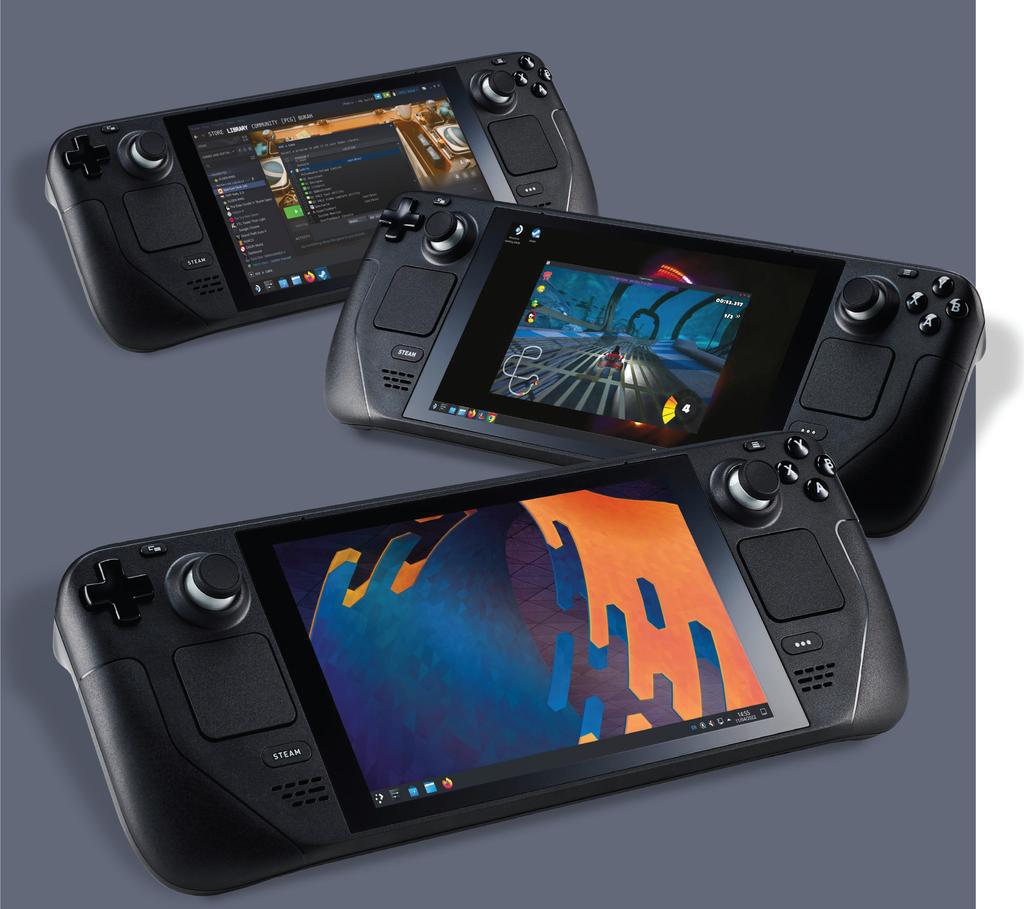ALL HANDS ON DECK

When the Steam Client came to Linux it was a watershed moment for gaming. At the time of its official release in January 2013, Linux gamers could run some 50 titles, most of which were Valve titles based on its Source engine. A year later, that number had risen to 300. Today, thanks to Valve’s Proton (a fork of Wine featuring a DirectX to Vulkan transition layers), that number is over 6,000. Driving this recent push has been the Steam Deck, Valve’s all-new Linux-powered portable games machine.
This is undoubtedly one of the largest developments Linux gaming has seen since the turn of the millennium. So naturally we were keen to get hold of the hardware and see what it’s capable of. The Steam Deck is powered by the third edition of SteamOS, which is based on Arch Linux. This gives it easy access to modern kernels, and the latest drivers for its (not inconsiderable) Zen 2 APU. This also means we can to meddle with it in the same way we like to meddle with regular Linux PCs.
So gather round the Deck’s crisp 1,280x720 display and see how you can customise and tweak this marvel of
You’re reading a preview, subscribe to read more.
Start your free 30 days